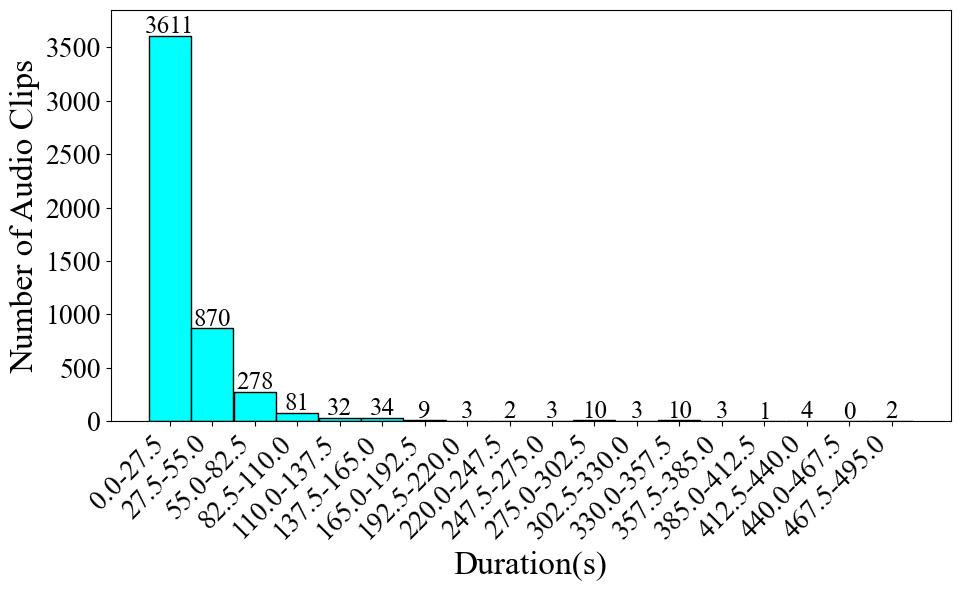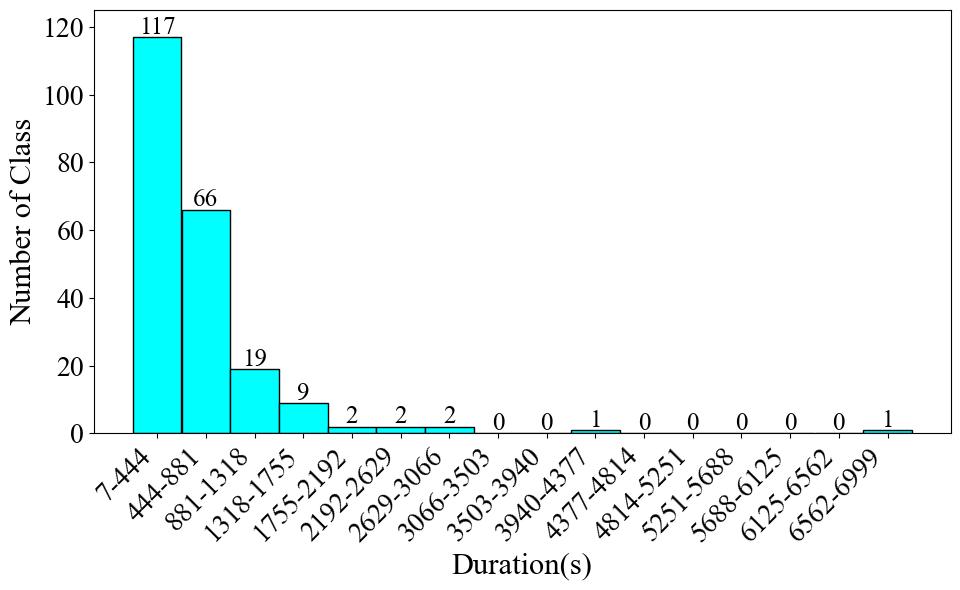Datasets:
File size: 9,738 Bytes
f683990 b2a3d55 f683990 b2a3d55 3cce46b bd7c6ce 3cce46b b2a3d55 5125aa8 b2a3d55 3cce46b b2a3d55 e1529b3 b2a3d55 3cce46b a078585 3cce46b 060aacf 3cce46b b2a3d55 3cce46b 67200e3 3cce46b b2a3d55 3cce46b b2a3d55 |
1 2 3 4 5 6 7 8 9 10 11 12 13 14 15 16 17 18 19 20 21 22 23 24 25 26 27 28 29 30 31 32 33 34 35 36 37 38 39 40 41 42 43 44 45 46 47 48 49 50 51 52 53 54 55 56 57 58 59 60 61 62 63 64 65 66 67 68 69 70 71 72 73 74 75 76 77 78 79 80 81 82 83 84 85 86 87 88 89 90 91 92 93 94 95 96 97 98 99 100 101 102 103 104 105 106 107 108 109 110 111 112 113 114 115 116 117 118 119 120 121 122 123 124 125 126 127 128 129 130 131 132 133 134 135 136 137 138 139 140 141 142 143 144 145 146 147 148 149 150 151 152 153 154 155 156 157 158 159 160 161 162 163 164 165 166 167 168 169 170 171 172 173 174 175 176 177 |
---
license: cc-by-nc-nd-4.0
task_categories:
- audio-classification
language:
- zh
- en
tags:
- music
- art
pretty_name: Chinese Traditional Instrument Sound Dataset
size_categories:
- 1K<n<10K
viewer: false
---
# Dataset Card for Chinese Traditional Instrument Sound
## Original Content
The original dataset is created by [[1]](https://link.springer.com/content/pdf/10.1007/978-981-13-8707-4_5.pdf), with no evaluation provided. The original CTIS dataset contains recordings from 287 varieties of Chinese traditional instruments, reformed Chinese musical instruments, and instruments from ethnic minority groups. Notably, some of these instruments are rarely encountered by the majority of the Chinese populace. The dataset was later utilized by [[2]](https://ietresearch.onlinelibrary.wiley.com/doi/pdf/10.1049/ccs2.12047) for Chinese instrument recognition, where only 78 instruments—approximately one-third of the total instrument classes—were used.
## Integration
We begin by performing data cleaning to remove recordings without specific instrument labels. Additionally, recordings that are not instrumental sounds, such as interview recordings, are removed to enhance usability. The filtered dataset contains recordings of 209 types of Chinese traditional musical instruments. Compared to the original 287 instrument types, 78 were removed. Among the remaining instruments, seven have two variants each, and one instrument, Yangqin, has four variants. We treat variants as separate classes, thus 219 labels are included at last.
In the original dataset, the Chinese character label for each instrument was represented by the folder name housing its audio files.
During integration, we add Chinese pinyin label to make the dataset more accessible to researchers who are not familiar in Chinese.
Then, we've reorganized the data into a dictionary with five columns, which includes: audio with a sampling rate of 44,100 Hz, pre-processed mel spectrogram, numerical label, instrument name in Chinese, and instrument name in Chinese pinyin. The provision of mel spectrograms primarily serves to enhance the visualization of the audio in the [viewer](https://www.modelscope.cn/datasets/ccmusic-database/CTIS/dataPeview). For the remaining datasets, these mel spectrograms will also be included in the integrated data structure. The total data number is 4,956, with a duration of 32.63 hours. The average duration of the recordings is 23.7 seconds.
We have constructed the [default subset](#default-subset) of the current integrated version of the dataset. Building on the default subset, we applied silence removal with a threshold of top_db=40 to the audio files, converting them into mel, CQT, and chroma spectrograms. The audio was then segmented into 2-second clips, with segments shorter than 2 seconds padded using circular padding. This process resulted in the construction of the [eval subset](#eval-subset) for dataset evaluation experiments.
## Statistics
|  |  |
| :--------------------------------------------------------------------------------------------: | :--------------------------------------------------------------------------------------------: |
| **Fig. 1** | **Fig. 2** |
Due to the large number of categories in this dataset, we are unable to provide the audio duration per category and the proportion of audio clips by category, as we have done for other datasets. Instead, we provide a chart showing the distribution of the number of audio clips across different durations, as shown in **Fig. 1**. Along with a chart, displayed in **Fig. 2**, showing the instrument categories distribution across various durations. From **Fig. 1**, 4,277 clips (86%) are concentrated in the 0-45 second range, with a steep drop in the number of samples in longer durations. For the longest duration interval (450-495 seconds), the corresponding category is Konghou only. In **Fig. 2**, the audio duration of 211 instrument categories is less than 1755 seconds. While 8 classes have audio duration longer than this. The single instrument that possesses the longest audio duration is Zhongruan. This indicates that there is only a slight class imbalance problem for this dataset.
| Statistical items | Values |
| :------------------------------------------: | :-------------------: |
| Total count | `4956` |
| Total duration(s) | `117482.75025085056` |
| Mean duration(s) | `23.705155417847124` |
| Min duration(s) | `0.27639583333333334` |
| Max duration(s) | `494.2522902494331` |
| Instrument types | `209` |
| Label Numbers | `219` |
| Eval subset total | `43054` |
| Class with the longest audio duartion | `中阮 (Zhong1 ruan3)` |
| Class in the longest audio duartion interval | `箜篌 (Kong1 hou2)` |
## Default Subset Structure
<style>
.ctis td {
vertical-align: middle !important;
text-align: center;
}
.ctis th {
text-align: center;
}
</style>
<table class="ctis">
<tr>
<td>audio</td>
<td>mel</td>
<td>label (200+class)</td>
<td>cname (string)</td>
</tr>
<tr>
<td>.wav, 44100Hz</td>
<td>.jpg, 44100Hz</td>
<td>C0090/<br>C0091/<br>...<br>T0323</td>
<td>大笒/<br>高音横笛/<br>...<br>都它尔</td>
</tr>
</table>
## Dataset Description
## Maintenance
```bash
git clone [email protected]:datasets/ccmusic-database/CTIS
cd CTIS
```
### Dataset Summary
During the integration, we first performed data cleaning to remove recordings with no specific instrument labels. The filtered dataset comprises recordings of 200 types of Chinese traditional musical instruments, totaling 3,974 audio clips. On average, there are approximately 20 audio clips per instrument. The data structure of the integrated dataset consists of three columns: an audio column containing audio files in .wav format, all sampled at a uniform rate of 22,050 Hz, a label column with 200 categories corresponding to the Chinese pinyin of the instrument names, and an additional column for the Chinese instrument names. This integrated dataset can be utilized for tasks such as Chinese instrument recognition or instrument acoustic analysis.
### Supported Tasks and Leaderboards
MIR, audio classification
### Languages
Chinese, English
## Usage
### Default Subset
```python
from datasets import load_dataset
dataset = load_dataset("ccmusic-database/CTIS", split="train")
for item in dataset:
print(item)
```
### Eval Subset
```python
from datasets import load_dataset
dataset = load_dataset("ccmusic-database/CTIS", name="eval")
for item in ds["train"]:
print(item)
for item in ds["validation"]:
print(item)
for item in ds["test"]:
print(item)
```
### Data Instances
.zip(.wav), .csv
### Data Fields
Up to 287 kinds of Chinese traditional musical instruments, improved Chinese musical instruments and Chinese ethnic musical instruments
### Data Splits
instruments, percussion
## Dataset Creation
### Curation Rationale
Lack of a dataset for Chinese traditional musical instruments
### Source Data
#### Initial Data Collection and Normalization
Zhaorui Liu, Monan Zhou
#### Who are the source language producers?
Students from CCMUSIC
### Annotations
#### Annotation process
Building a high-quality musical sound database requires consideration on every aspect of the criteria in terms of the recording environment, performer, sample content, annotation standard and quality of recording and performing.
#### Who are the annotators?
Students from CCMUSIC
## Considerations for Using the Data
### Social Impact of Dataset
Advancing the Digitization Process of Traditional Chinese Instruments
### Discussion of Biases
Only for Traditional Chinese Instruments
### Other Known Limitations
Sample imbalance
## Additional Information
### Dataset Curators
Zijin Li
### Evaluation
[1] [Liang, Xiaojing et al. “Constructing a Multimedia Chinese Musical Instrument Database.” Lecture Notes in Electrical Engineering (2019): n. pag.](https://link.springer.com/content/pdf/10.1007/978-981-13-8707-4_5.pdf)<br>
[2] [Li, R., & Zhang, Q. (2022). Audio recognition of Chinese traditional instruments based on machine learning. Cogn. Comput. Syst., 4, 108-115.](https://ietresearch.onlinelibrary.wiley.com/doi/pdf/10.1049/ccs2.12047)<br>
[3] <https://huggingface.co/ccmusic-database/CTIS><br>
[4] [Li Z, Liang X, Liu J, et al. DCMI: A Database of Chinese Musical Instruments[J].](https://dlfm.web.ox.ac.uk/sites/default/files/dlfm/documents/media/zijin-et-al-dcmi.pdf)
### Citation Information
```bibtex
@dataset{zhaorui_liu_2021_5676893,
author = {Monan Zhou, Shenyang Xu, Zhaorui Liu, Zhaowen Wang, Feng Yu, Wei Li and Baoqiang Han},
title = {CCMusic: an Open and Diverse Database for Chinese Music Information Retrieval Research},
month = {mar},
year = {2024},
publisher = {HuggingFace},
version = {1.2},
url = {https://huggingface.co/ccmusic-database}
}
```
### Contributions
Provide a dataset for Chinese Traditional Instrument Sounds |